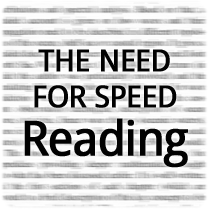
Have you ever seen a true speed reader? Check out this video of a speed reader in action. Although, to be honest, we weren’t talking about speed reading out loud. We are talking about the kind of speed reading that will get you ahead academically, no need to sound like a chipmunk on 5-hour energy!
Speed reading is a handy skill. In fact, let’s not even call it speed reading. Instead, we’ll call it “Learning to read faster.” Research has shown that as you read, your eyes are also moving around and seeing other words on the page at the same time, which can slow you down. There are also a lot of “filler” words used in text to make it grammatically correct but don’t really add to the meaning.
With these 5 Speed Reading tips, you’ll be able to take in more information in a short period of time. Ready to finish classroom reading so you can move on to more important things like playing video games, texting friends, or chatting online? Then you will definitely want to learn these techniques.
1. Zip-thru-it
Whether you’re reading an article in a magazine or a chapter in a book, start by skimming the whole thing. Read the introduction, any headings or text that is bolded, and the conclusion. This prepares your brain, so to speak, for what lies ahead. Once you know have an idea of what the reading material is about, your eyes and brain will be prepared to fill in the blanks faster as you read.
2. Lead ahead
Use your finger, a pen, or a pointer to lead along the line of text. Remember when you learned to read? You couldn’t wait to “read like a big kid” and not use your finger. Well, forget all about that. This is an excuse to regress to your inner-child. It turns out your finger, or a pointer of some kind, does wonders for keeping your eyes from unconsciously moving around on the page and re-reading unnecessary words.
If you are doing online research, use your computer mouse to lead the way. Consider highlighting passages you are reading online and changing the font to a light color. Our eyes actually prefer to read light-colored words on dark background. Try it, you might like it!
BONUS TIP: Lead the pointer a little faster than you actually read and your eyes will want to keep up. This will slowly train you to increase your reading speed. It’s like long-distance training for the eyes.
For more on reading quicker, click here.
3. Sound off
Speaking of things you learned to do in elementary school, don’t sound words out in your head or mouth them out loud. Your brain actually knows the words by sight (unless it’s a new word of course, in which case you should look it up) and the sounding out process is just wasting your precious time. The U.S. Air Force has done the research and your brain can recognize a word in 5/100 of a second. Yeah. That’s fast. Sounding it out in your mind takes about ¼ of a second…so you do the math. Get a move on already!
BONUS TIP: Chunk it out, don’t sound it out. Chunking is a process where you skip words (in grammar, you learned them as “articles”) like “and” or “the”. They don’t change the meaning of the words and take up space. Learn to gloss over them and take in more words in less time.
4. Keep moving
Pausing between paragraphs, something most of us do unconsciously, takes up time as well. When you’re studying, the pauses are less important because your brain only needs to ingest the material. A technique you will have to unfortunately use a little sparingly in the real world (except standardized tests!) is to ‘browse’ paragraphs with intricate details and only come back to read in detail if necessary.
5. Practice
If you practice these techniques for about 20 minutes a day, we bet you will be reading about 3 times faster than normal within a month or so. Plus, you kill two birds with one stone: reading for “speed reading practice” and homework reading at the same time! Woo hoo!
If you’re interested in learning more about speed reading, Contact The Premier Tutors. Need an English Tutor in Boston? We can work with you on speed reading and reading comprehension in no time.

Speed reading isn’t a correct term indeed, as you pointed out. I like to call it natural reading, you read at the speed your brain is able to take information in.
Especially the 3rd tip you give is difficult for people. It is easier to shut down the voice in your head when you count from one to four with each line you read (for instance). This way your inner voice is not able to mentally use the words you are reading. You will however take them in.
This does take some practice for some people. No worries, changing habits is difficult and this is a tricky one.
Enjoy natural reading!
(and be sure to check out mind mapping as well. It helps a lot in remembering what you read)
Thanks for the tip Arjen!
Pingback: Best Learning Style | Solutions - Solutii